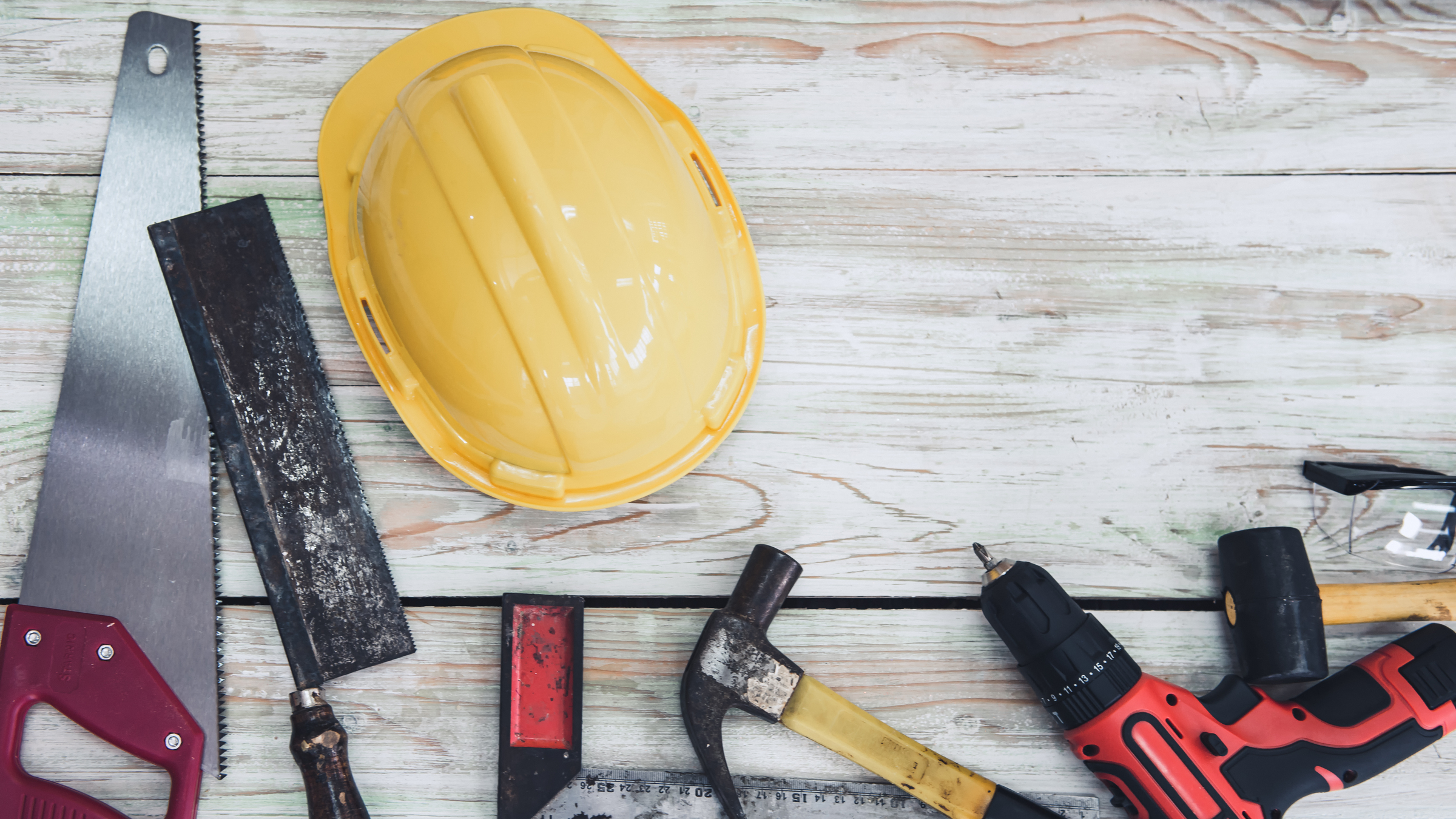The DIYer should start with the basic tools first. Add in extra tools that have different functions as your handyperson skills improve. You can add different sized tools, and upgrade existing versions to more expensive ones as time goes on. There are also powered tools to extend your tool collection. Ask for advice on the tools that you want to buy from the person selling the tools. Most hardware shops will be able give you more information about the various tools and their uses. Tell them what job you are doing so they can help you find the right tool.
The basic toolkit
Hammer
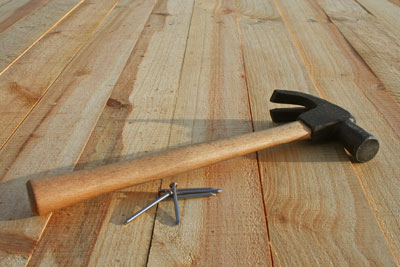
The most useful all round hammer to have is a claw hammer . They are used to drive in nails. The claw part is used for removing nails, and can also lever up floorboards or other things. Available with a wooden, glass fibre or steel handle. When choosing a hammer, test how it feels in your hand. It should be not too heavy, and not too light.
Hammers extras that can be added are a sledge hammer, wooden mallet, rubber mallet, ball pein hammer. A sledge hammer is used for heavy jobs like breaking concrete , stone or brick and driving in stakes. Use of safety equipment like goggles while using a sledge hammer is a must. A wooden mallet is used to tap wood joints together, where using a metal hammer could cause damage. An alternative is to use a thin scrap of plywood between the wood and the hammer. A ball pein hammer is used for shaping metal and hammering rivets. Also consider a wooden mallet, rubber mallet and ball pein hammer.
Screwdrivers
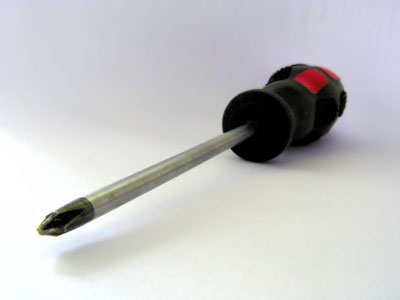
A flat head screwdriver and a Philipshead screwdriver are essential tools. Phillipshead screwdrivers have an x-shaped tip, and are used for machine screws, deck screws and more. Wood screws are often flathead screws, and these need the flat bladed screwdriver. A variety of sizes increases the handiness, but also increases the size of the toolbox.
Drill
A hand drill is useful, along with a selection of drill bits. Choose the appropriate drill bit for the material to be drilled. Masonry bits perform differently to wood drill bits. Powered drills have become relatively cheap to buy. You can get battery powered ones or electric drills. The advantage of battery powered is that they can be used without the need for long power cords, handy if you are working up ladders and so on.
Pliers-pliers
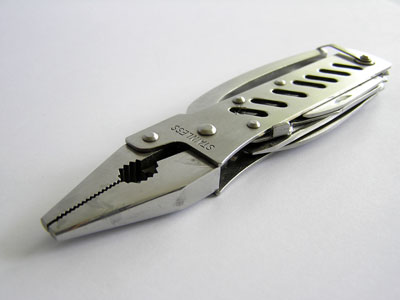
Pliers-pliers are really useful for holding objects firmly, for bending, cutting or physical compression. There are different types of pliers for different jobs:
- Insulated pliers are a must for working.
- Combination pliers – Serrated jaws for gripping, usually wide jawed for better grip.
- Long nosed or needle nosed pliers – used for both cutting and gripping, they give good control and reach for fine work. Useful for working with cables and wire, but also have other uses.
- Multigrips-Good for plumbing work.
- Vice grips or locking pliers-resemble pliers, but they have a locking mechanism, enabling you to grip things tightly.
Adjustable spanner
These come in a range of sizes, a small one is good to start off with. Add in a large one as you expand your toolkit.
Saws
A saw has a toothed cutting blade attached to a handle, and is used for cutting various materials. There are different saws for these different jobs. There are also hand saws and power saws. A power saw will make a big job quicker, while a handsaw will be useful where there there is no electricity, or it is fiddly to roll out a power cord.
Wood saws
A coarse saw will cut faster, but will leave a rougher edge. A basic tool kit will start with one saw, but over time can add finer or coarser blades. There are several types of wood saw. A ripsaw cuts along the grain of the wood, but as timber is commercially available in the widths required, it has limited use in the DIYer toolbox.
Cross cut hand saw
A crosscut handsaw is a useful basic tool to own.
Powered circular saw
A powered circular saw is more useful once the home handyperson starts to increase his range of tools. The panel saw is a smaller version of the crosscut saw. There are saws that have one handle with interchangeable blades. A log saw is for fast and rough cutting and is used mostly for gardening jobs as it leaves a ragged finish.
Hacksaw
Hacksaw-for cutting hard materials such as metal, brick, bone etc. The powered version of a hacksaw is an angle grinder.
Spirit level
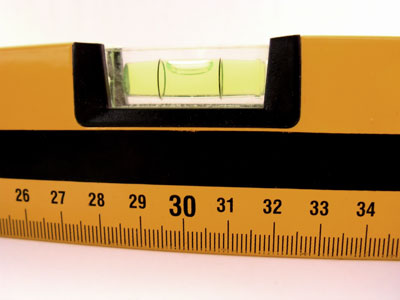
A Spirit level tool that tells you whether something is horizontal or vertical. If you look online you will find a smartphone app that can do this job!
Measuring tools
A good job requires accurate measuring. A builders tape measure is an essential tool. It is made from flexible materials which allows for easy handling and storage, and for measuring over great distances and around curves and corners. Retractable tape measures are even more compact and quick to roll up these can be spring loaded or have a rolling handle.
Tape measure
A steel ruler is useful for ruling a straight line on work, as well as measuring, and being made from metal means that it will keep the straight edge through plenty of rough work.
Carpenters square
A carpenters square is not essential, but handy for measuring a right angle quickly and accurately.
Marking tools
These can be pencils, chalk, chalk lines, spray paint and marking knives Use them for recording measurements, marking placements, marking lines.
Safety gear
Eye protection like safety glasses or goggles, hearing protection in the form of ear muffs or ear plugs, gloves,dust masks, fume masks, work boots, plastic coveralls. The basic tool kit should include at least some of these.
Tool Box
Its not necessary to have a tool box, but it does make life easier. A tool box ensures that you can find them easily, when they are all stored in the one place. Get in the habit of returning the tools to the tool box. An alternative is to store them on a pegboard or on magnetic strips or holders on the wall.
Utility knife
A knife with a retractable razor sharp blade. Useful for all sorts of precision cutting jobs, and cheap to buy.
Paint brushes and paint rollers
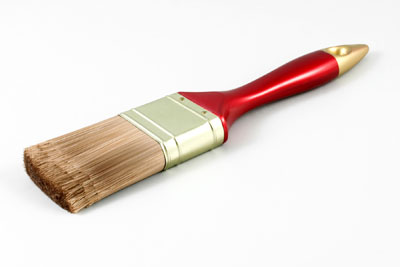
Useful for home painting jobs, which is a good money saver. Buy several different sized brushes. A roller tray with a paint roller is good for large painting jobs. Sandpaper is a must for good preparation before painting.
Rasps or files
One or two of these are cheap and handy for quick shaping or filing jobs.
Crowbar
Crowbar, or wrecking bar- a heavy metal bar with a curved a end a flattened point. A useful but not essential tool, this is used as a lever for pulling things apart or breaking things up.
Buying Tools
Buy the best quality tool you can afford. If you consider the money you save with a repair job, the best tools pay for themselves many times over. More is not better, quality is. High quality tools last a lifetime. And remember, dont waste money on tools that you dont need.



